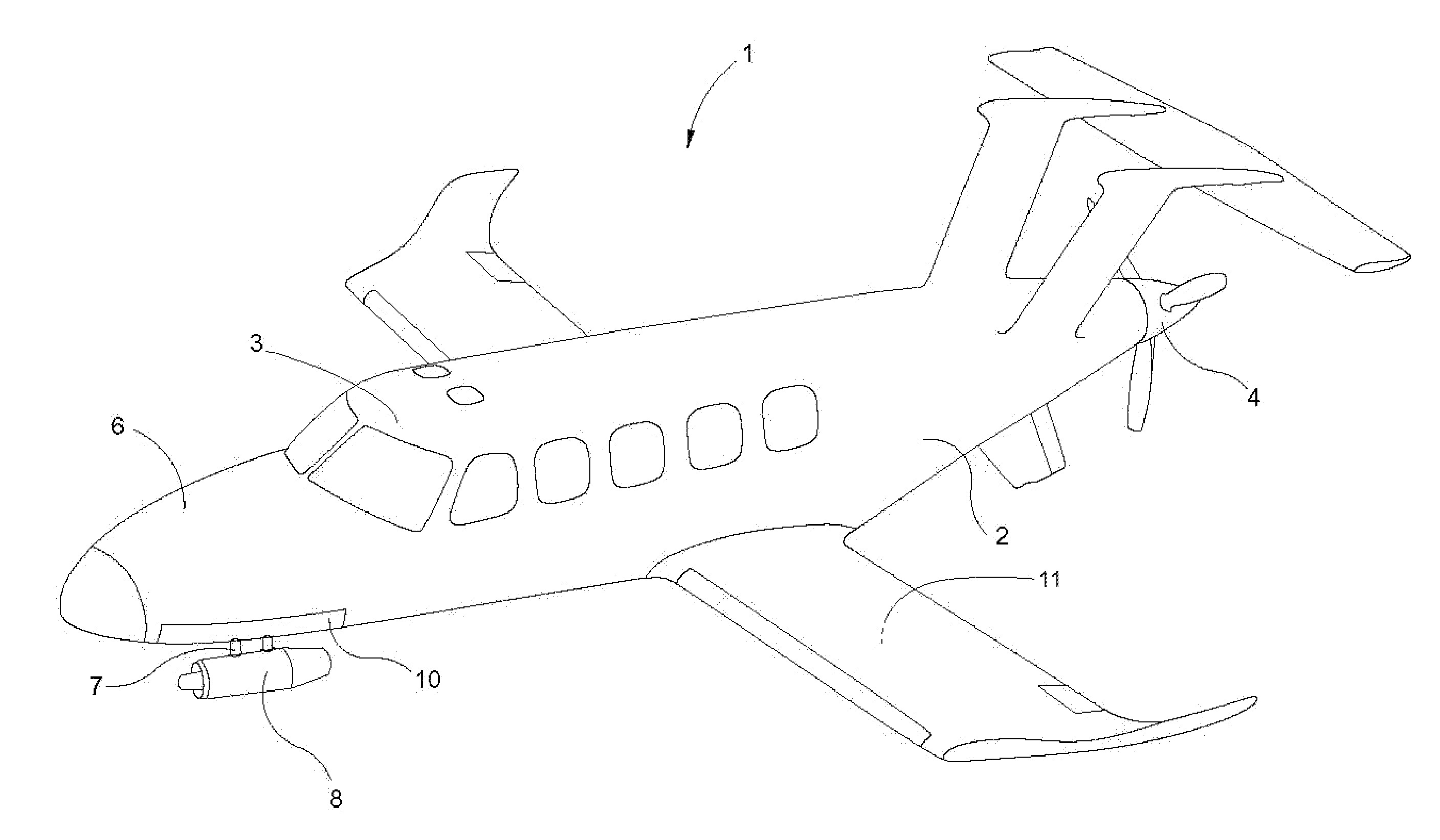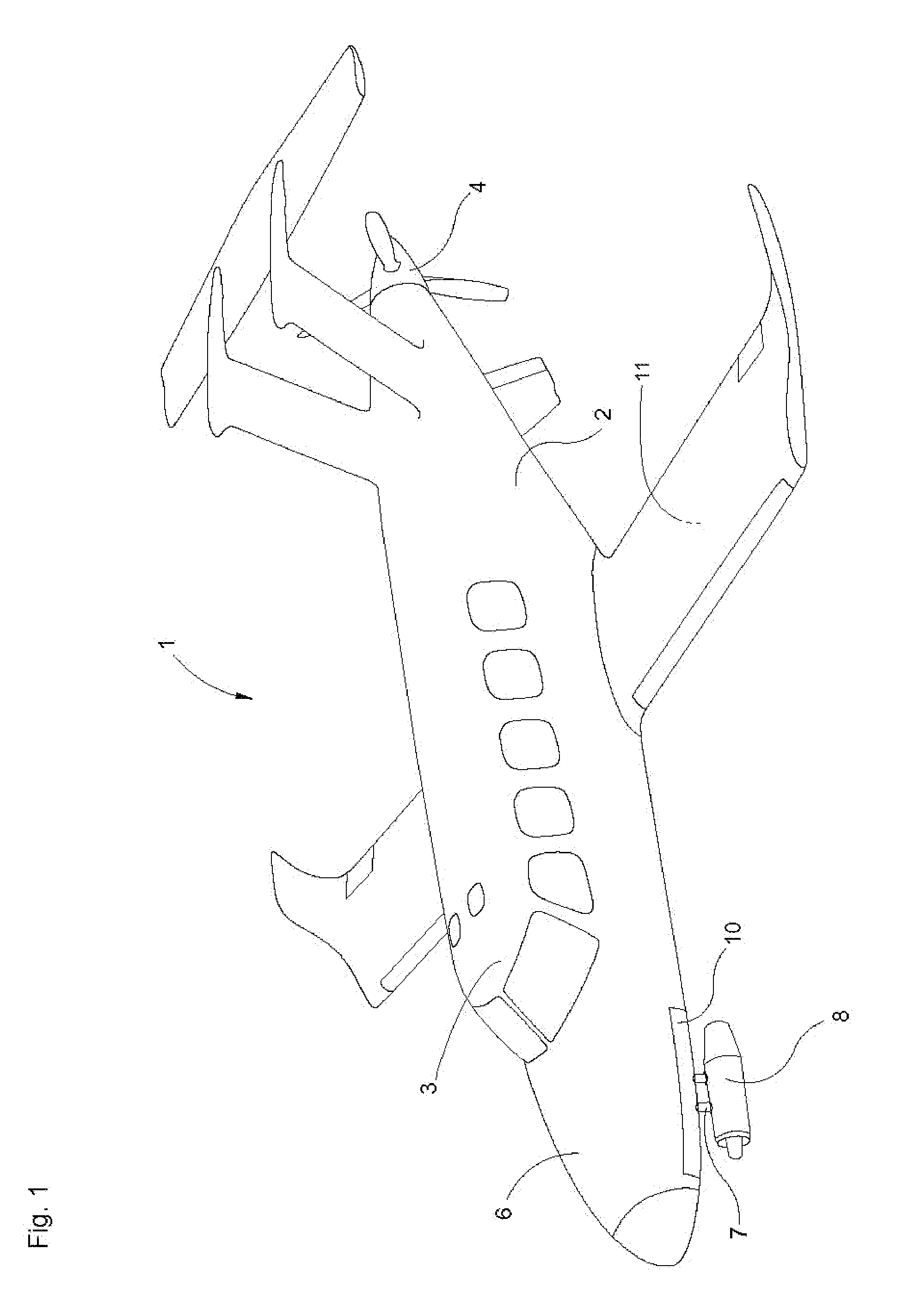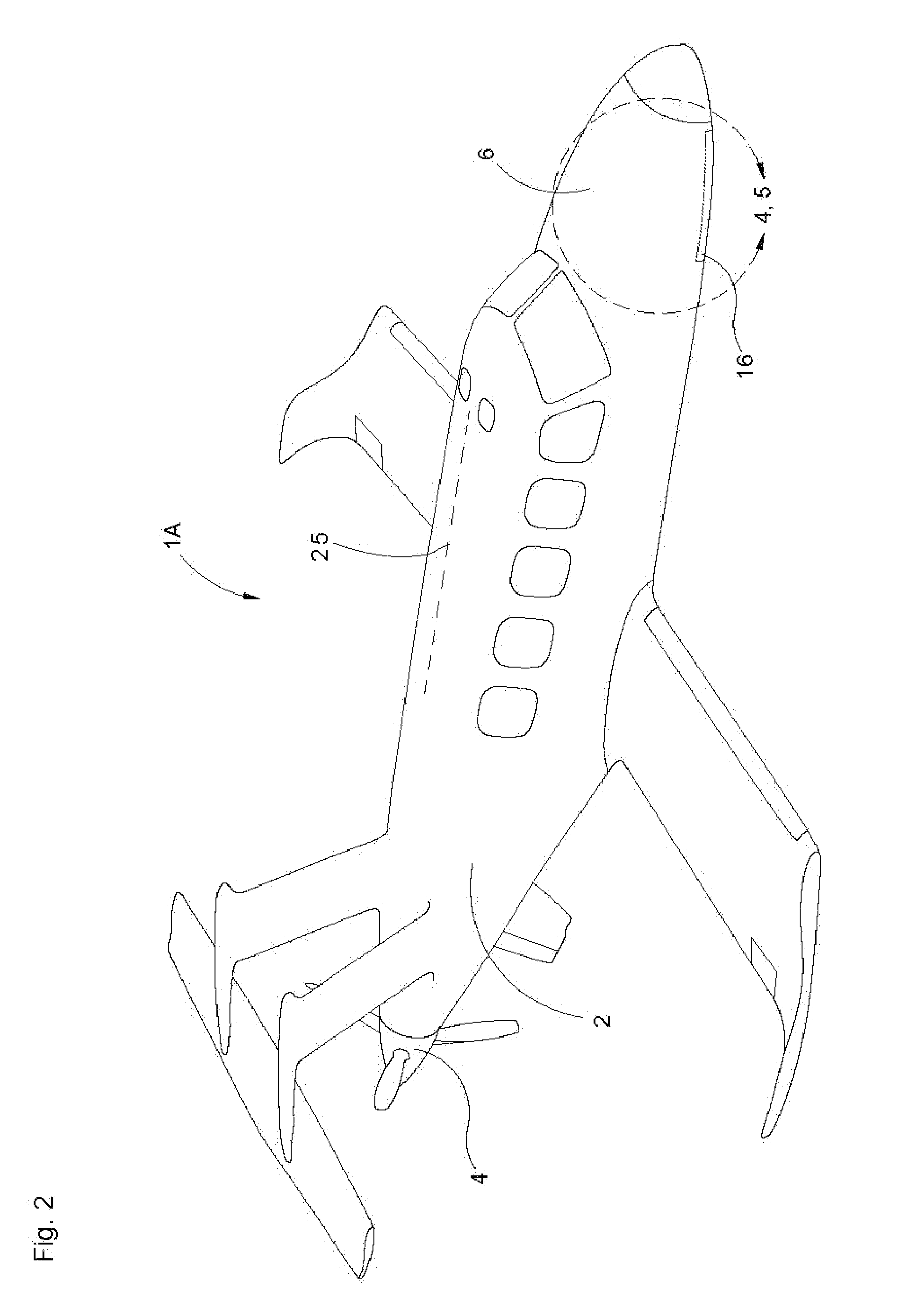Fuel Efficient Fixed Wing Aircraft
- Summary
- Abstract
- Description
- Claims
- Application Information
AI Technical Summary
Benefits of technology
Problems solved by technology
Method used
Image
Examples
Embodiment Construction
[0025]Referring now to the drawings, and in particular to FIG. 1, a preferred embodiment of the instant inventive fixed wing aircraft is referred to generally by Reference Arrow 1. The aircraft 1 represents an exemplary airplane having a conventional fuselage 2 housing a forward cockpit 3 for carriage of up to nine passengers or equivalent cargo, and being operated by a single pilot. A “pusher” configured variable pitch rear thrust propeller 4 is preferably mounted at the rearward or tail end of the fuselage 2 of the aircraft 1. In the depicted preferred embodiment, the “pusher” propeller 4 is powered by a rear fuselage mounted turbo-prop engine (not depicted within view).
[0026]Referring further to FIG. 1, the forward end of the fuselage 2 of the aircraft 1 preferably forms a substantially conical nose section 6. An auxiliary turbo-fan jet engine 8 is rigidly suspended upon at least a first support strut 11 which preferably extends laterally and downwardly from the nose section 6. T...
PUM
 Login to View More
Login to View More Abstract
Description
Claims
Application Information
 Login to View More
Login to View More - R&D
- Intellectual Property
- Life Sciences
- Materials
- Tech Scout
- Unparalleled Data Quality
- Higher Quality Content
- 60% Fewer Hallucinations
Browse by: Latest US Patents, China's latest patents, Technical Efficacy Thesaurus, Application Domain, Technology Topic, Popular Technical Reports.
© 2025 PatSnap. All rights reserved.Legal|Privacy policy|Modern Slavery Act Transparency Statement|Sitemap|About US| Contact US: help@patsnap.com



